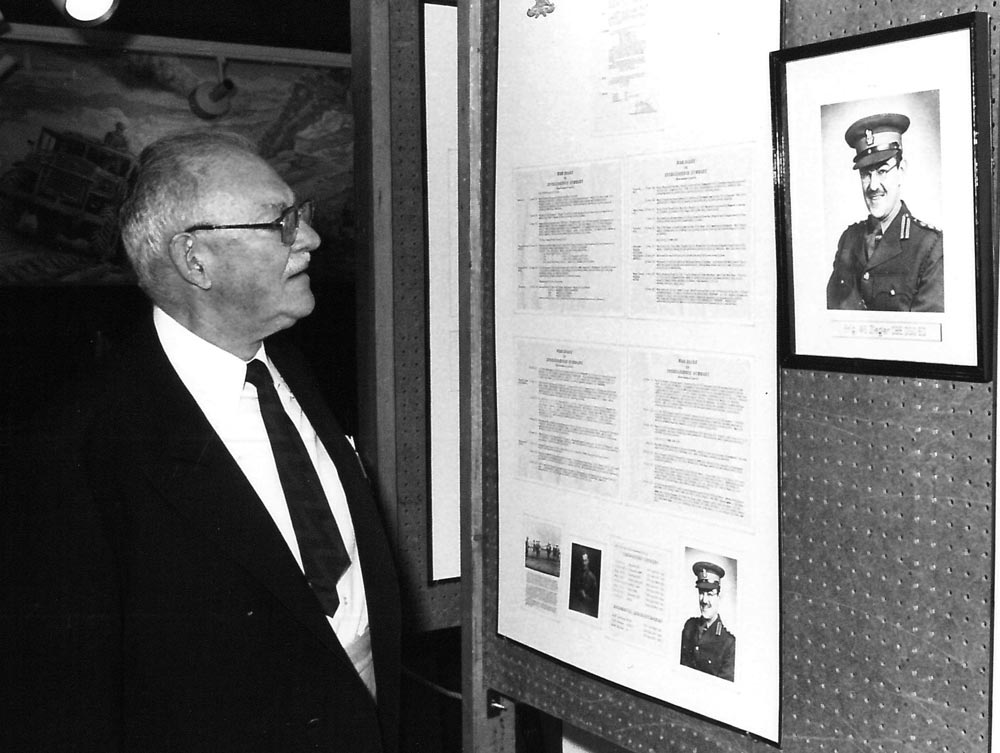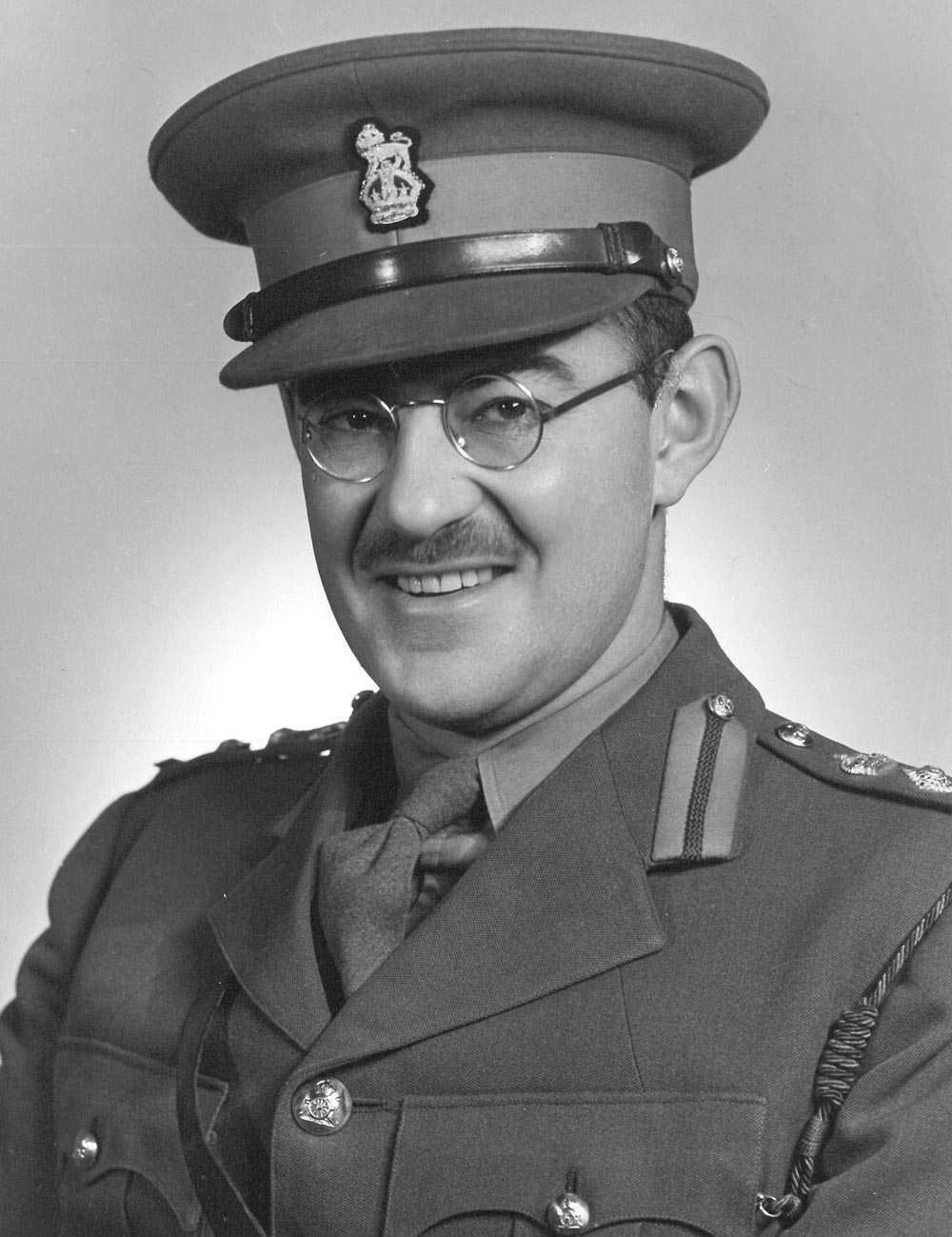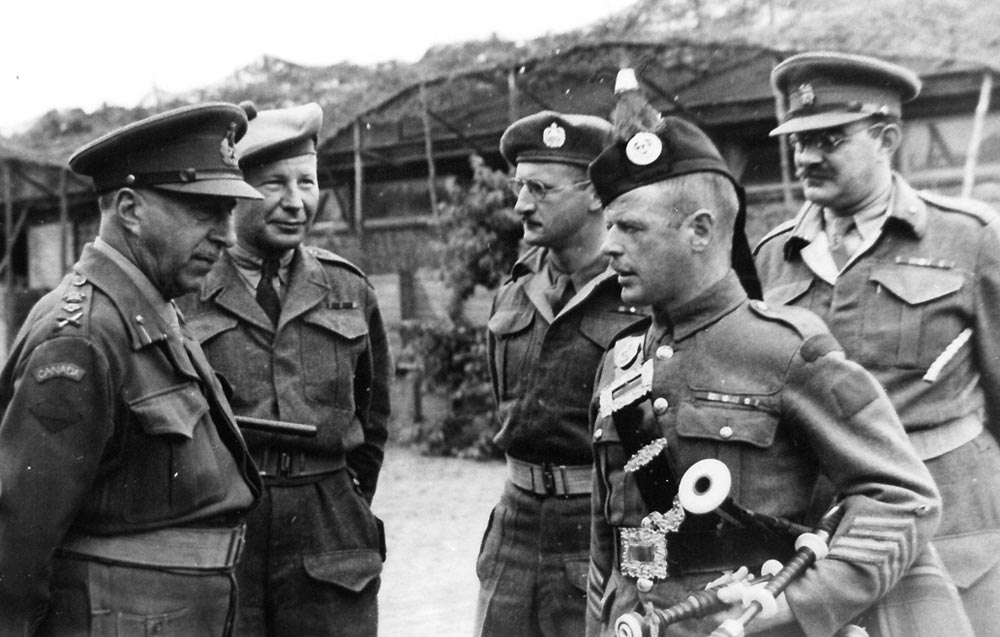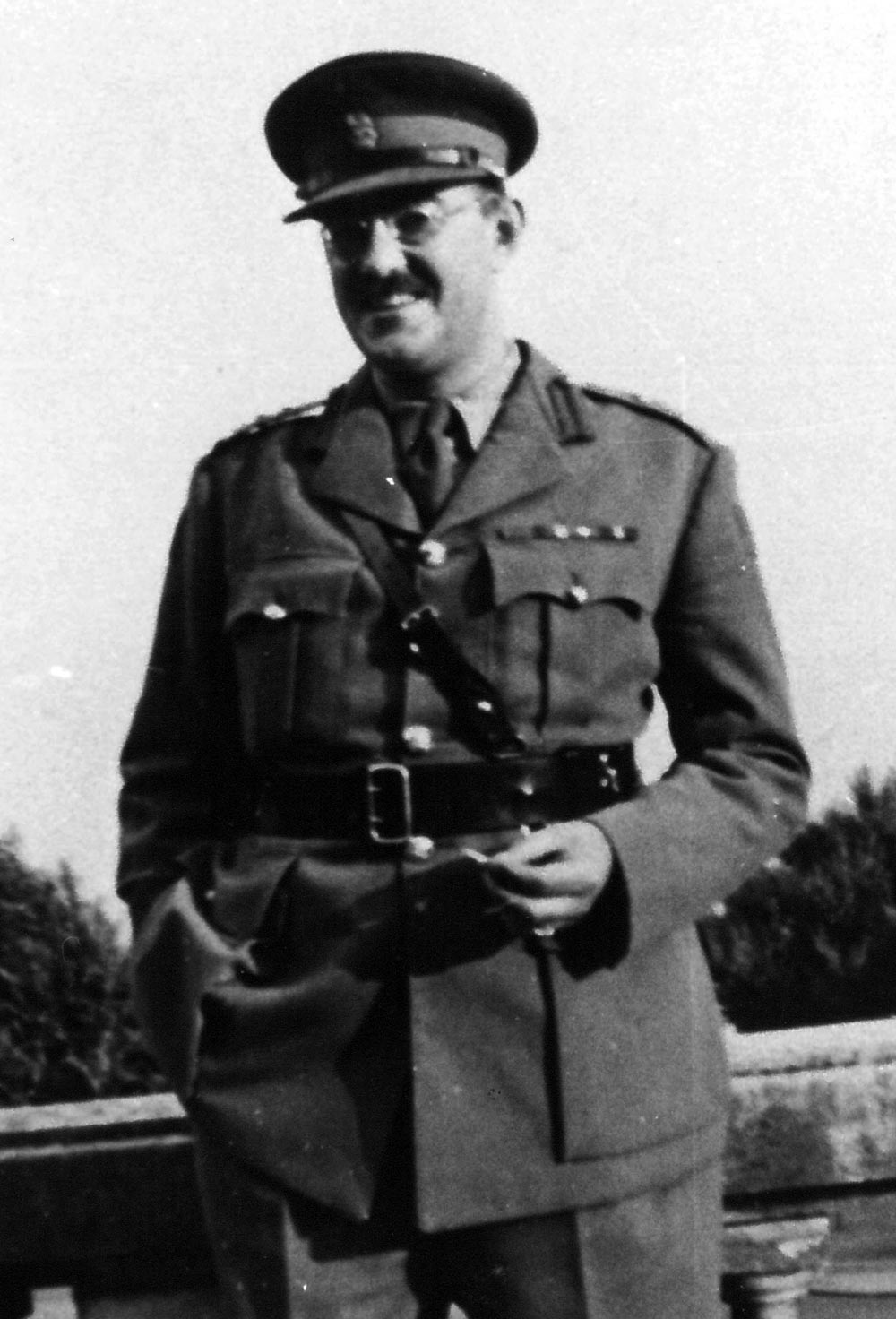

• To the left, Gen H.D.G. Crerar talking to soldiers during the full Divisional Parade on June 10, 1945. BGen Ziegler is standing to the right.
• BGen Ziegler at the RCA Museum reviewing a temporary exhibit on him in November 1986.
• A Second World War portrait of BGen W.S. Ziegler
• BGen W.S. Ziegler in Holland circa 1945.
Photos courtesy RCA Museum
Andrew Oakden
Stag Special
Representatives from a small museum in Holland recently contacted us to ask for assistance with a display to honour a famous Canadian Commander who helped liberate Holland.
BGen W.S. Ziegler CBE, DSO, ED, BSc had the distinction of accepting the surrender of 100,000 German troops in Holland on May 4 and 5, 1945. He accomplished this task at age 34.
The RCA Museum has a number of artifacts which belonged to BGen Ziegler, including his medal set, a Second World War uniform, spectacles, photographs, letters and an unpublished autobiography titled Why?.
I found a letter from BGen Ziegler to Maj J.R. Fisher, the Regimental Major at Regimental Headquarters in CFB Shilo dated May 13, 1996.
In the letter, BGen Ziegler mentioned he had recently completed “a very short resume” of his life. As a Gunner in the Royal Regiment of Canadian Artillery (RRCA), he considered the RCA Museum his museum.
He mentioned donating his uniforms and accoutrements. He wanted to add a copy of his autobiography. He also offered to speak in November 1996 at the Junior Officers Course on the Base.
In early May 1945, BGen Ziegler learned the Germans were about to surrender. He stated, “I was given a segment of Holland to occupy … we settled in around Dordrecht, a sizeable city of 200,000 people.”
Over two days and two visits starting May 4, BGen Ziegler accepted the surrender of an estimated 100,000 German forces from two German Corps Commanders.
On May 4, 1945, BGen Ziegler arrived by jeep to Leiden a small town in Holland to accept the surrender of 50,000 men from Gen Bertrand. He stopped at an apartment building with the German Corps Commander upstairs. The following extract is from Ziegler’s unpublished autobiography: “I knew that he was a Lieutenant-General and I was merely a Brigadier, two ranks his junior. So I, at the bottom of the stairs, thought to myself what am I going to do? He is my captive, but he’s also my senior. Anyway, I walked into the room and I gave him a sharp British salute. [I said] ‘Brigadier Ziegler.’ With that he replied, ‘Hail Hitler’ with a Hitler salute.”
BGen Ziegler had to react. He quickly walked out and went back to his Jeep. However, the streets were full of Dutch citizens and he could not drive away.
Then, the General’s aide came outside and asked BGen Ziegler to come back inside to meet with the General again. Ziegler responded, “You go back and tell the General I will see him when he learns how to salute properly.”
The aide said the General knows how to salute properly and they went inside. BGen Ziegler did not salute a second time.
He wrote, “I just stood there and he saluted me with a smart British salute. I felt that was a victory!”
The following day, BGen Ziegler met Gen Diestl south of Rotterdam to accept the surrender of another 50,000 men. The German Corps Commander had asked for permission to transport some German troops by barge back to Germany. BGen Ziegler gave approval for the German soldiers to leave the next morning.
The next morning, BGen Ziegler surprised the Germans by arriving at the barge to inspect the men. However, from three to four hundred yards away, he could smell an unbearable stench. Upon inspection, with German soldiers standing shoulder-to-shoulder in rows of 20, the men were the source of the terrible smell.
There were no toilets on the barge. BGen Ziegler told the German General, “You will disembark all these men immediately and you will march them back to Germany.”
Gen Diestl tried to argue and then complied. BGen Ziegler stated had they sailed, many would have perished during the three-day voyage.
These stories show a different side to the war. They provide a fascinating and vivid perspective on the end of the war in Europe and of the liberation of Holland.
At the end of the war, in May 1945, BGen Ziegler was a Royal Canadian Artillery Commander tasked with the liberation of Holland.
He was only 34 years of age and Commanded six Regiments composed of 6,000 men.
After he received the surrender of German forces, he later commanded a victory parade of 12,000 men from the 1st Canadian Division in The Hague.
VE Day marks an extraordinary moment in world history and BGen Ziegler had a surprising role to play. For more information on this war hero, stop by the RCA Museum to learn about him, and peruse his military donations which are located in our Great Gunner section.



